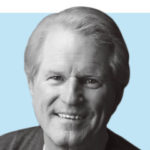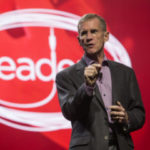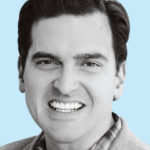 On Jan. 1, Matt Sanderson became president and CEO of SmithBucklin, the world’s largest association management company. Formerly executive vice president and chief executive of SmithBucklin’s Business + Trade Industry Practice, Sanderson succeeded Henry Givray, who had been the company’s CEO since 2002.
On Jan. 1, Matt Sanderson became president and CEO of SmithBucklin, the world’s largest association management company. Formerly executive vice president and chief executive of SmithBucklin’s Business + Trade Industry Practice, Sanderson succeeded Henry Givray, who had been the company’s CEO since 2002.
Before joining SmithBucklin in 2010, Sanderson consulted with the company on a strategic project, and was impressed from the first meeting on. “It was obvious,” he said in a recent interview with Convene, “that the approach, commitment, and integrity demonstrated by SmithBucklin’s senior leadership were unique.” So when he was asked to come in house, “there were some very powerful intangibles in play related to culture, values, and mission.”
For more insight about the culture of the employee-owned company, Sanderson points to a profile of SmithBucklin in Second to None: The Productive Power of Putting People First, a business-leadership book by Charles Garfield first published in 1995. “In it, there are several enduring concepts from our company’s founder, William E. Smith,” Sanderson said, “including commitment to the growth of our people, understanding and appreciating our employees and client organizations, and instilling a sense of urgency. I consider those concepts timeless.”
What was your first job?
I spent three years working in Los Angeles as an analyst for Capital Economics, a firm providing industry research and market analysis for use in antitrust cases as well as general corporate litigation. Like most entry-level jobs, it wasn’t glamorous, but it allowed me to develop some solid fundamental business skills at an early age. I worked alongside some really bright economists and attorneys who exposed me to a wide range of industries — and industry issues.
It was fascinating work, and I have found myself drawing on that experience frequently throughout my career. Interestingly enough, my work regularly required me to research and turn to associations as great resources for credible industry data and trend information. From that first job, then, I have had an appreciation for the direct and indirect contributions of associations to the fabric of our economy. Call it serendipity. It’s certainly funny how things work out.
What was compelling enough to you about this industry that you would shift gears from M&A advisory services?
Honestly, it was a pretty natural transition. Previously, my clients [at Sikich, a professional-services firm] were small- and mid-sized business owners who were considering a sale, merger, or acquisition due to specific life or business circumstances. My role was that of a trusted adviser on some of the biggest decisions of their lifetimes. I always considered it a privilege to be able to serve them, and found that — in addition to the obvious strategic and quantitative factors — candor, humility, and emotion all played important roles in the decision making and outcome of any transaction.
When I joined SmithBucklin, serving as the executive vice president of the Print Services & Distribution Association (PSDA) [in 2010], I felt almost immediately at home with PSDA’s members. Many were owners and principals of small- and mid-sized businesses who were dealing with many of the same challenges as my M&A advisory clients. I also found that many of my skills and past experiences had prepared me really well — both on a business and human level — for my future at SmithBucklin.
The one thing I could never have predicted was how rewarding the work in our industry is. To be able to contribute to successful outcomes for so many organizations and industries is extremely fulfilling. And working with volunteers — while complex at times — is such an important part of it all. These volunteer leaders inspire us to be at our best and make it easy for us to make that extra effort to serve.
Are there lessons that you bring from that world that are helpful to you at SmithBucklin?
In terms of a specific professional lesson, I’d say simply that I’ve learned it is impossible to fake good work. My mantra is “Be yourself, believe in yourself, and believe in what you are doing.” Those three elements are essential for anyone to grow and succeed.
What trends are you keeping an eye on?
When I hear the word “trend,” I’ve been conditioned to pause. There seem to be dozens of “top trend” lists in every medium, every industry, seemingly every time you turn a page. I also always consider the source. So I guess you could say I’m patient regarding trends. I think it is prudent to look for trends that will endure and that truly are actionable.
With that in mind, I’m currently paying close attention to three areas: 1) trends directly impacting the association industry — travel, hospitality, events, education, and membership are some examples; 2) social, political, business, and environmental trends that can affect our client organizations and their industries; and 3) trends that could impact or improve our own business — which is so dependent on people. In particular, I am very interested in culture and in productivity and efficiency — ways that our people could work better, smarter, and more effectively in service of our client organizations.
What do you hope that your SmithBucklin colleagues say about you when you are not in the room?
I’ve described myself as both lighthearted and relentless, so first of all, I hope that that comes through. Further, I hope that they would say that I am deeply committed to our people, our company, and our mission, which is to achieve the missions of the client organizations we serve. Mostly, I hope they say that they are inspired to be their best — and to do their best in service of our client organizations — and that I have something to do with that.



